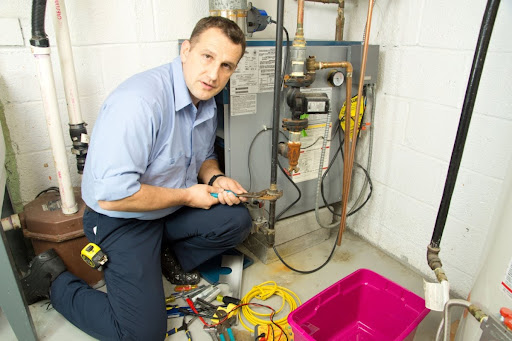Looking to replace your home’s furnace? Before you make the big purchase, it’s important to make sure you’re getting the right size unit for your space. This is an often overlooked detail for many homeowners, but it can make a significant difference in terms of heat output and energy efficiency.
However, without expert training and background knowledge, figuring out the right size furnace can be confusing. Neighborhood Plumbing, Heating, Cooling and Electrical is here to make it easy by sharing our expertise with Minnesota homeowners like you. You can even count on our team to handle the furnace installation as well as a range of other heating services developed to keep your family cozy.
Facts About Furnace Sizing
Picking the right size furnace involves much more than just measuring your square footage. Modern heating systems require precise calculations to deliver optimal performance.
What BTUs Mean
A furnace’s heat output is measured in British Thermal Units (BTUs), which indicate how much warmth the unit can deliver each hour. One British thermal unit is the energy required to raise the temperature of a pound of water by one degree Fahrenheit.
This BTU rating is crucial for aligning a furnace’s heating capacity with the specific needs of a home, providing steady, comfortable warmth without causing the system to overwork. Residential furnaces generally range from 40,000 to 120,000 BTUs, with larger homes typically needing higher ratings to heat each room effectively.
How Square Footage Affects Sizing
The square footage of your home also comes into play when determining the best furnace size. However, the relationship between space and heating needs isn’t perfectly straightforward. Most homes need between 30-35 BTUs per square foot in moderate climates, but this heating factor can shift dramatically based on your home’s unique characteristics.
Other Factors That Influence Size Requirements
While square footage and BTUs are essential, several other factors also play a role in sizing your furnace. These additional factors ensure that the furnace size is well-suited to your unique home setup.
- Climate Zone: Homes in colder climates need more heating power compared to those in mild climates. Climate zone adjustments allow the furnace to produce the right amount of heat output.
- Home Insulation: Insulation determines how well your home retains heat. High insulation means the furnace doesn’t have to work as hard to maintain warmth.
- Ceiling Height: Taller ceilings mean more air to heat, demanding a larger BTU capacity.
- Window Efficiency: Windows lose heat, especially if they aren’t well-insulated. Efficient windows reduce the furnace’s workload, helping it heat the space without strain.
Problems with Oversized Furnaces
When it comes to HVAC equipment, bigger isn’t always better. An oversized furnace generates too much heat too quickly, causing the system to short-cycle, which means it turns on and off frequently. Short cycling can also result in uneven heating, with some rooms feeling overly warm while others remain chilly. This leads to wasted energy, temperature fluctuations, and potential wear and tear on the unit.
Moreover, an oversized furnace won’t run long enough to effectively filter the air, impacting indoor air quality. Over time, the oversized furnace wears down faster, resulting in more frequent repairs and reduced equipment lifespan.
Issues with Undersized Furnaces
On the other end, an undersized furnace lacks the capacity to heat the entire house adequately. A furnace too small will struggle to keep up, running almost constantly during colder months and inflating utility bills. This extra work causes quicker wear on the system, leading to a shorter lifespan and potential breakdowns.
An undersized furnace also results in a less comfortable home, as certain rooms may remain cold while others only get mildly warm. This inefficiency in heat output means that a small unit can’t maintain an even heating cycle, often leaving the home feeling drafty and unwelcoming.
Our Professional Sizing Process
To find the right size for your new furnace, an HVAC technician will examine every aspect of your home. They start with precise square footage measurements of your living spaces, then evaluate your windows — both their quantity and quality. The process includes thorough insulation level evaluations and comprehensive air leakage testing throughout your home.
As a locally-owned company in St. Cloud, Minnesota, we know the regional climate data, which also helps us determine the needs of homeowners in our community. Your home’s orientation also factors in during our process. Each of these elements plays a vital role in making sure you don’t get a too-big or too-small furnace.
The Importance of Expert Installation and Maintenance
Does furnace size matter the most? While it is a crucial component of your comfort and home’s efficiency, expert installation and maintenance are also invaluable in getting the most from your investment.
Expert installation ensures that all connections are secure, airflow is optimal, and the system operates at peak efficiency. Routine maintenance, on the other hand, further extends your furnace’s lifespan, keeping the unit clean, checking components, and identifying issues before they escalate.
Call for Help Finding the Right Size Furnace
If you’re unsure about the ideal furnace for your home, our HVAC technicians are here to help guide you. With expertise, precision, and a commitment to quality, we provide homeowners with heating solutions tailored to meet each family’s needs. Call us today to discuss the best size furnace for your home and enjoy the warmth, reliability, and savings that come with a perfectly sized heating system.




